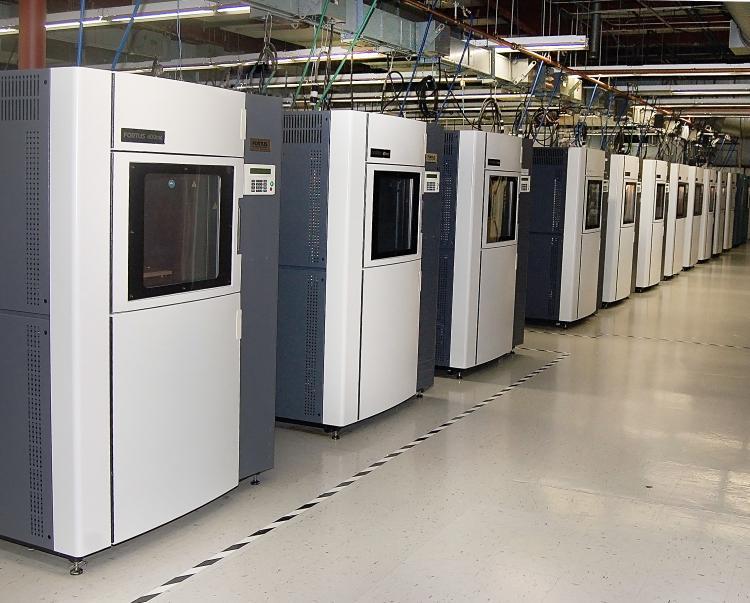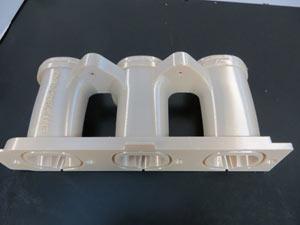 Since the inception of the automobile, it’s been the platform for showing off tantalizing color, flash, and futuristic innovative energy, all meant to entice us with the idea of speed and power. When you think about it, it’s almost comical how such a relatively small amount of metal and parts can be the vehicle itself for so much sexy marketing spin and cultural status.
Since the inception of the automobile, it’s been the platform for showing off tantalizing color, flash, and futuristic innovative energy, all meant to entice us with the idea of speed and power. When you think about it, it’s almost comical how such a relatively small amount of metal and parts can be the vehicle itself for so much sexy marketing spin and cultural status.
While we all secretly rubberneck in traffic to get a better look at the guy in the Lamborghini, nothing gets attention like success on the race track. While the basic car needs to get us to and fro, some vehicles exist on a different level altogether as aesthetics, performance, high-quality parts, and results on the road and track all come together in one comprehensive package like the Lamborghini.
If you want to look to the future of 3D printing, and especially in automotive, here it is, being used to accentuate world-class speed and engineering perfection. And the Lamborghini team could teach us all a thing or two about digital design and 3D printing. This is not a technology that they just discovered, by any means.
3D printing has become integrated in the automotive industry quite speedily, not only being used to produce high-quality components along with those manufactured traditionally, but also giving the technology credence and validity on a mass level. For a company like Lamborghini, the focus is not spin, but real performance. Always on the true cutting edge, Lamborghini has been working with Stratasys for years now using 3D printing for rapid prototyping and manufacturing of end-use parts.
Known for making vehicles that are superior, sleek, and the ultimate in fast, it didn’t take long for the Lamborghini team as a whole to discover and realize the benefits 3D printing can offer them. The technology quickly opened a new world of latitude and versatility in design, as well as offering faster methods for making higher-quality parts that don’t raise the bottom line.
With strength, speed, power, and reliability being what it takes to bring together a Lamborghini and keep it at perfect running speed, parts must be able to endure high temperatures and rigorous usage—and they must be able to be produced quickly as well, without denying quality in that process.
While 3D printing was integrated more slowly at first, done through outsourcing, Lamborghini purchased a Stratasys Dimension 1200es 3D Printer back in 2007. In 2010, they purchased a Stratasys Fortus 360mc Production System and then, the Fortus 400mc Production System, with the large build envelope.
“We use Stratasys FDM-based 3D printing technology to produce end-use parts because, quite simply, it meets all the requirements demanded of it,” said Fabio Serrazanetti, of the Lamborghini car body technical department. “In the motor racing world, the capability to output very quickly highly durable parts and components within a seemingly unlimited design scope offers an unprecedented advantage. We use our Fortus 3D Production Systems to typically – but not exclusively – produce high-performance aesthetic parts, including profiles and air conducts.”
 Before parts are manufactured, the team at Lamborghini is able to use their Stratasys equipment to design models and prototypes which allow them to tweak, test, and approve parts and designs in development, with choices of materials being chosen depending on what they are being used for.
Before parts are manufactured, the team at Lamborghini is able to use their Stratasys equipment to design models and prototypes which allow them to tweak, test, and approve parts and designs in development, with choices of materials being chosen depending on what they are being used for.
“We aim to use materials that mimic the material properties of the final product as far as possible,” explains Serrazanetti. “For example, we currently use Stratasys’ ULTEM 9085 FDM thermoplastic with the Fortus 400mc to produce high-performance parts for the grill as they will be subjected to high temperatures from the engine compartment.”
“We also use production-grade thermoplastic, ABS-M30, as well as PC-ABS,” he adds. “Indeed, this is perfectly suited to producing certain interior parts as it also offers excellent feature definition and surface finish, making it better aesthetically.”
With 3D printing, they are able to respond to requests from technicians more quickly when something different or more complex is required on the fly. Serrazanetti says that sometimes they receive ‘urgent requests’ from the Lamborghini’s Advanced Composite Research Center. These requests involve producing a special thermoplastic.
“We’re sometimes called upon to produce ULTEM models, on which very thin carbon fiber sheets are laid down and moulded around to produce carbon fiber parts,” he explains. “Using ULTEM in this way reflects the key attributes of FDM technology in that it allows us to quickly and confidently produce extremely strong complex parts when the timeframe leaves the technicians with no other option.”
Parts being designed are:
- Section bumpers
- Grills
- Aesthetic frames
- Door panels
- Seat covers
- Steering wheels
- Conveyors
- Air heaters
Parts are tested by the quality control department on models at first, which are then put into the next phase of serious evaluation on the track and road.
“At the moment Stratasys’ technology delivers the fastest and most economical means of constructing prototype parts for us,” said Serrazanetti.
 The team at Lamborghini is experiencing all the typical benefits 3D printing offers. Processes are more streamlined, efficient, and affordable—all the while offering those making new designs to have more freedom as well as ease when a redesign or fix is necessary for a component.
The team at Lamborghini is experiencing all the typical benefits 3D printing offers. Processes are more streamlined, efficient, and affordable—all the while offering those making new designs to have more freedom as well as ease when a redesign or fix is necessary for a component.
And in the end, with the incredible autonomy afforded by digital design, coupled with the growing number of DIYers working on automotive projects, one must wonder if one day we will all be driving—or flying—about in our own affordable and uniquely designed futuristic looking vehicles that came straight off of our own 3D printers. That’s something to envision, and may not be all that far off.
Are you surprised to hear that Lamborghini uses 3D printing for so many high-quality components? Discuss in the 3D Printing at Lamborghini forum thread over at 3DPB.com.
Subscribe to Our Email Newsletter
Stay up-to-date on all the latest news from the 3D printing industry and receive information and offers from third party vendors.
You May Also Like
IperionX Inks 10-Year Deal with Wisconsin Manufacturer for 80 Metric Tons of Titanium Per Year
IperionX, the Charlotte-based supplier of sustainable titanium powders used for additive manufacturing (AM) and metal injection molding (MIM), has signed a ten-year deal with United Stars, a group of industrial...
Gastronology Launches Industrial Production of 3D Printed Food for Dysphagia Patients
Food 3D printing has, in many ways, been an additive manufacturing (AM) segment looking for the right business case. While some applications are beautiful and others may or may not...
Lockheed Martin Leads $3M Investment in Q5D’s Electronics 3D Printing System
Q5D, an original equipment manufacturer (OEM) of robotic arm, hybrid additive manufacturing (AM) systems used for wire harness production, has closed a $3 million investment round. The investment arm of...
3D Printing News Briefs, April 6, 2024: Depowdering, Cybertruck Door Handles, & More
In today’s 3D Printing News Briefs, ioTech’s digital manufacturing CLAD technology is opening up opportunities for microelectronics and additive manufacturing. Hexagon and Raytheon Technologies commercially released the Simufact Additive Process...


































